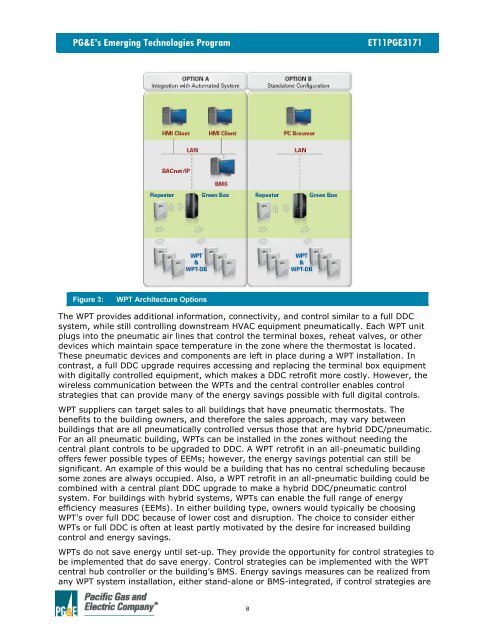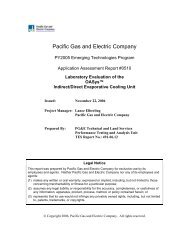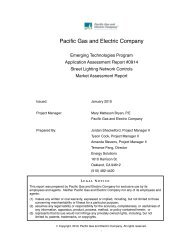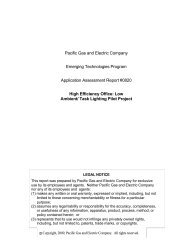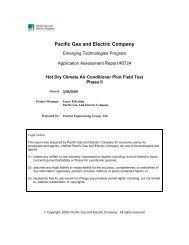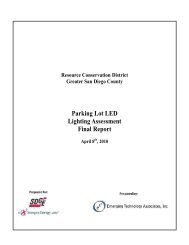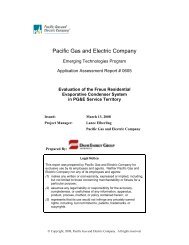PGE Wireless Pneumatic Thermostat ET Final Report.pdf
PGE Wireless Pneumatic Thermostat ET Final Report.pdf
PGE Wireless Pneumatic Thermostat ET Final Report.pdf
Create successful ePaper yourself
Turn your PDF publications into a flip-book with our unique Google optimized e-Paper software.
PG&E’s Emerging Technologies Program <strong>ET</strong>11<strong>PGE</strong>3171<br />
Figure 3: WPT Architecture Options<br />
The WPT provides additional information, connectivity, and control similar to a full DDC<br />
system, while still controlling downstream HVAC equipment pneumatically. Each WPT unit<br />
plugs into the pneumatic air lines that control the terminal boxes, reheat valves, or other<br />
devices which maintain space temperature in the zone where the thermostat is located.<br />
These pneumatic devices and components are left in place during a WPT installation. In<br />
contrast, a full DDC upgrade requires accessing and replacing the terminal box equipment<br />
with digitally controlled equipment, which makes a DDC retrofit more costly. However, the<br />
wireless communication between the WPTs and the central controller enables control<br />
strategies that can provide many of the energy savings possible with full digital controls.<br />
WPT suppliers can target sales to all buildings that have pneumatic thermostats. The<br />
benefits to the building owners, and therefore the sales approach, may vary between<br />
buildings that are all pneumatically controlled versus those that are hybrid DDC/pneumatic.<br />
For an all pneumatic building, WPTs can be installed in the zones without needing the<br />
central plant controls to be upgraded to DDC. A WPT retrofit in an all-pneumatic building<br />
offers fewer possible types of EEMs; however, the energy savings potential can still be<br />
significant. An example of this would be a building that has no central scheduling because<br />
some zones are always occupied. Also, a WPT retrofit in an all-pneumatic building could be<br />
combined with a central plant DDC upgrade to make a hybrid DDC/pneumatic control<br />
system. For buildings with hybrid systems, WPTs can enable the full range of energy<br />
efficiency measures (EEMs). In either building type, owners would typically be choosing<br />
WPT’s over full DDC because of lower cost and disruption. The choice to consider either<br />
WPTs or full DDC is often at least partly motivated by the desire for increased building<br />
control and energy savings.<br />
WPTs do not save energy until set-up. They provide the opportunity for control strategies to<br />
be implemented that do save energy. Control strategies can be implemented with the WPT<br />
central hub controller or the building’s BMS. Energy savings measures can be realized from<br />
any WPT system installation, either stand-alone or BMS-integrated, if control strategies are<br />
8


